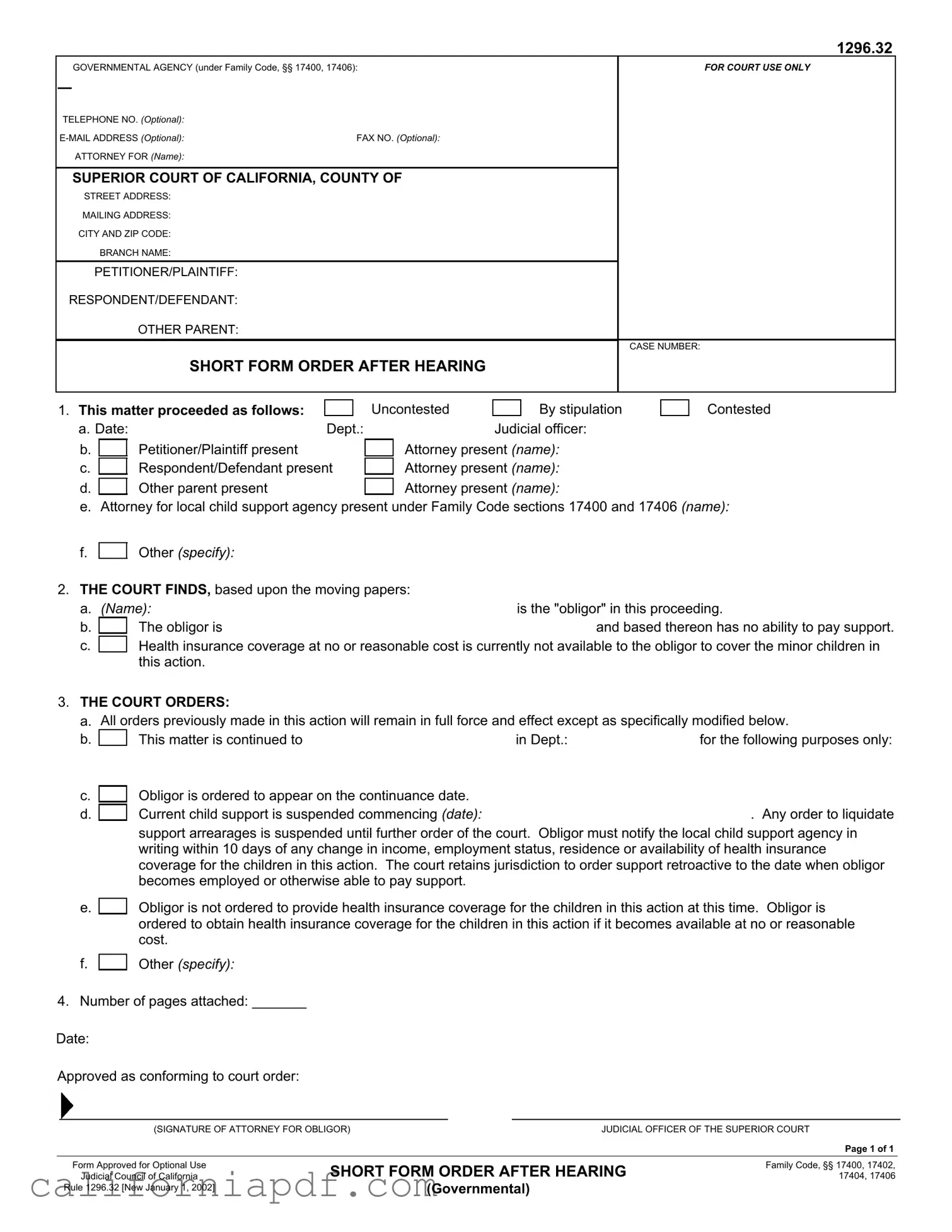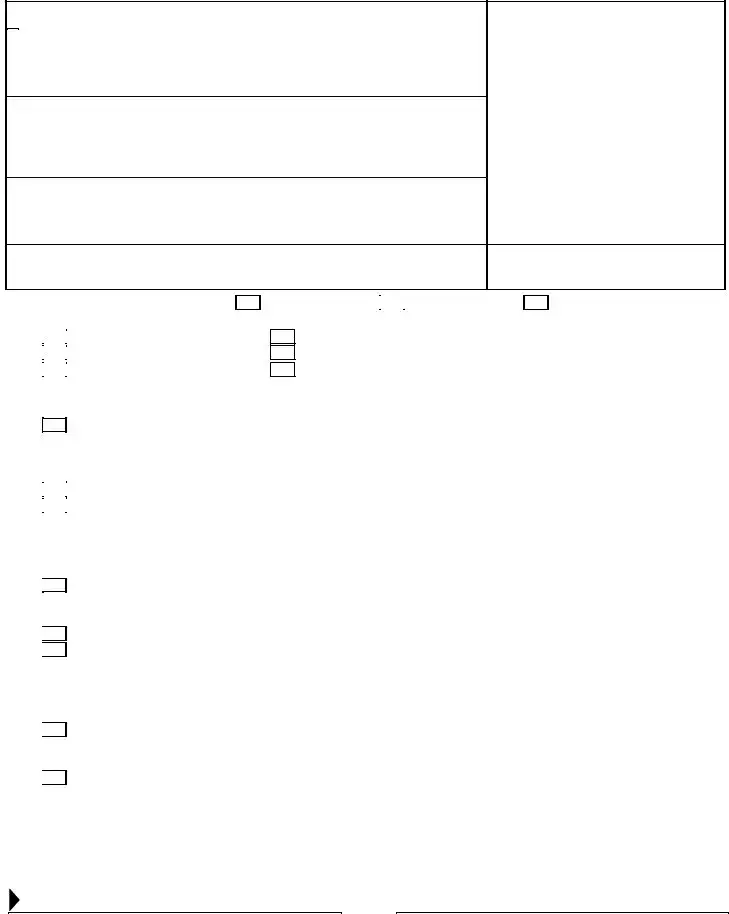The California 1296 32 form, officially known as the Short Form Order After Hearing, is a legal document used in family court. It outlines the decisions made by the court regarding child support matters. This form is particularly utilized following a hearing to ensure orders concerning child support, health insurance for minors, and other pertinent issues are clearly documented and enforced.
This form is typically filled out by the judicial officer presiding over the case. It records the outcomes of the court hearing related to child support obligations, indicating the obligations of the 'obligor'—the individual required to provide support. However, parties involved in the child support case, such as the obligor, the local child support agency's attorney, and other legal representatives, should be familiar with its contents.
The California 1296 32 form should be submitted right after a court hearing that addresses child support and related issues. It is a summary of the court's orders post-hearing, ensuring that all parties are aware of their responsibilities and the next steps following the court's decision.
-
Details of the governmental agency involved, if applicable.
-
Information regarding the court and the case—such as court address, case number, and names of the parties involved.
-
The outcomes of the court hearing, including presence of the parties, the decision on the contested or uncontested nature of the hearing, and representation details.
-
Court's findings regarding the obligor’s ability to pay and the status of health insurance for the children.
-
The specific orders given by the court, including any modifications to existing orders, orders for the obligor concerning employment and insurance, and the suspension of support under certain conditions.
After completion by the judicial officer, the form must be approved and signed, typically by the attorney representing the obligor or another designated representative. The signed form is then filed with the court clerk to become a part of the official case record, ensuring that all court-mandated actions are legally binding and enforceable.
The obligor must inform the local child support agency of any significant changes in their circumstances, such as income, employment status, residence, or health insurance availability for the children. This notification must be made in writing within 10 days of the change. This allows the court or the agency to modify support orders accordingly, ensuring obligations reflect the current ability to pay and the needs of the children.
Yes. The court retains jurisdiction to modify the orders, including support amounts and health insurance provisions, based on changes in circumstances. If the obligor becomes employed or otherwise able to pay support, the court may order support retroactive to the date of change in the obligor's situation.
Obligors are not immediately required to provide health insurance coverage for the children unless it becomes available at no or reasonable cost. This part of the form ensures children’s healthcare needs can be addressed without placing undue burden on the obligor if they are currently unable to provide such coverage.
For assistance with the California 1296 32 form or any questions regarding its requirements, individuals can consult with a family law attorney or reach out to the local child support agency. Legal aid organizations may also provide guidance and support for those navigating family court proceedings and related documentation.











